Listening Stones Jumping Rocks
Len Lye
Peter Peryer
Phil Dadson
Shona Rapira-Davies
Paul Johns
Anne Noble
Rachel Shearer
Janine Randerson
Dane Mitchell
Sriwhana Spong
Raewyn Martyn
Alice Bonifant
Sorawit Songsataya
Ngahuia Harrison
curated by Susan Ballard and Sophie Thorn
19 November 2021 – 27 March 2022
A weather rock sits on a shelf in an empty bach with wooden games and mismatched sets of playing cards. It is stapled inside a dusty plastic envelope with a typewritten piece of paper. A listening stone is placed in the hand of a child. It is told secrets and filled with worries, until it is no longer useful—a coping mechanism past its use by date.
Recent years have witnessed new responses from artists and curators to the uneven experience of living in the Anthropocene. Some artists are re-connecting environments with sensations, others create speculative objects with lives beyond the gallery. Natural histories and human histories are converging, and art is once again taking a central role. Listening Stones Jumping Rocks extended these narratives of mourning and hope to the scale of the cosmos.
Listening Stones Jumping Rocks drew together items from the Victoria University of Wellington Art Collection with key loaned works to offer a re-examination of the boundaries between human and nonhuman, life and living, speculation and imagination. The artists gathered represented a timeline of engagements with the environment. They mourned the sixth great extinction. They asked us to bear witness. They combined ritual with research. They spoke back. They reminded us of our relationship with both materials and whenua. They turned to the planet. From Len Lye’s chance clap that echoes across millennia to Sorawit Songsataya’s feathered gathering of grief, these works raised questions about what might be seen and heard amidst the material ecologies of the Anthropocene.
Listening Stones Jumping Rocks was curated by Susan Ballard and Sophie Thorn. The exhibition was presented to coincide with the first conference of the Association for the Study of Literature, Environment and Culture (Australia and New Zealand) to be held in Aotearoa: Ngā tohu o te huarere: Conversations beyond human scales. This conference, hosted by Te Herenga Waka’s Art History and English programmes and the Centre for Science in Society, was held between 23 and 26 November 2021.
Susan Ballard is an art writer working in the intersections of art history, critical nonfiction, and the environmental humanities. She has written essays for October, Environmental Humanities, Reading Room, The Anthropocene Review, Sydney Review of Books, Griffith Review, ArtLink, and Eyeline, amongst many others. Her books include Alliances in the Anthropocene: Fire, Plants and People (with geographer Christine Eriksen, Palgrave Pivot, 2020), and 100 Atmospheres: Studies in Scale and Wonder (with the MECO network, Open Humanities Press, 2019). Her latest book is Art and Nature in the Anthropocene: Planetary Aesthetics (Routledge, 2021). She often works in collaboration, from 2011 to 2020 she was director of MECO: the Material Ecologies research network at the University of Wollongong, Australia. She is Associate Professor of Art History Tāhuhu Kōrero Toi at Te Herenga Waka—Victoria University of Wellington, Aotearoa New Zealand. Susan was one of the conveners of Ngā tohu o te huarere: Conversations beyond human scales, the 8th ASLEC-ANZ Conference, Aotearoa 2021.
Sophie Thorn is the Curator Collections at Te Pātaka Toi Adam Art Gallery. She holds a Master of Arts in Art History and Theory from the University of Canterbury and a Diploma in Law and Collections Management through the London Institute of Art Law. She studied Heritage Materials Science through the Physical Sciences department at Te Herenga Waka-–Victoria University of Wellington and at the Chemical Institute of Technology in Prague, Czech Republic. She has held positions at the Canterbury Museum, Experience Wellington, and Te Manawa Museums Trust. She has been with Te Pātaka Toi Adam Art Gallery since 2014.
This exhibition was staged concurrently with The Machine Stops: The Allegorical Architectural Project.
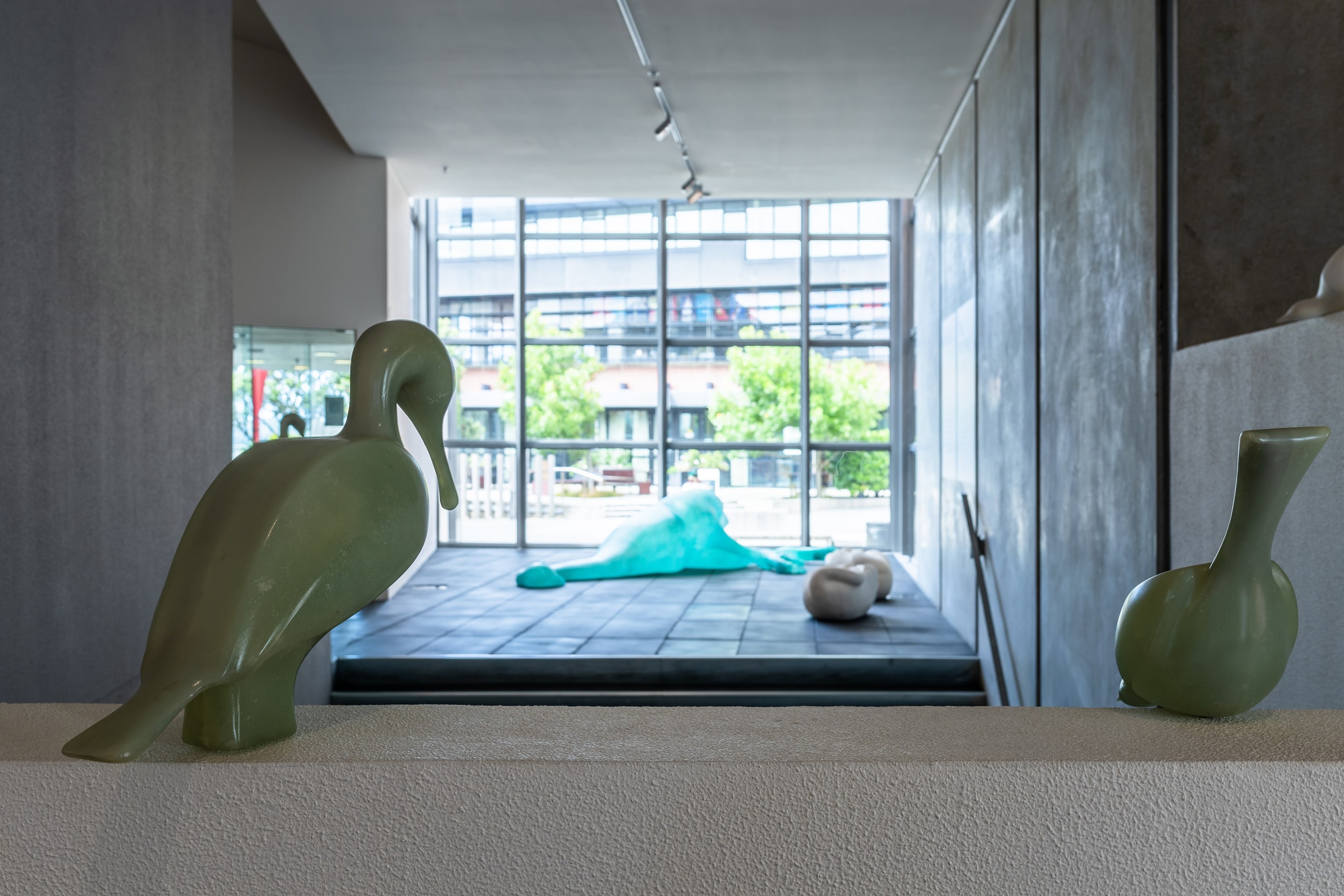
Sorawit Songsataya, The Interior (detail), 2019, fibreglass, polyester resin, acrylic lacquer, Oāmaru stone. Commissioned by Auckland Art Gallery Toi o Tāmaki and supported by the Chartwell Trust and the Contemporary Benefactors of Auckland Art Gallery, 2019. Private collection, Auckland. Installation view, Listening Stones Jumping Rocks, Te Pātaka Toi Adam Art Gallery, Te Herenga Waka Victoria University of Wellington, 2021. Photo: Ted Whitaker

Sorawit Songsataya, The Interior (detail), 2019, fibreglass, polyester resin, acrylic lacquer, Oāmaru stone. Commissioned by Auckland Art Gallery Toi o Tāmaki and supported by the Chartwell Trust and the Contemporary Benefactors of Auckland Art Gallery, 2019. Private collection, Auckland. Installation view, Listening Stones Jumping Rocks, Te Pātaka Toi Adam Art Gallery, Te Herenga Waka Victoria University of Wellington, 2021. Photo: Ted Whitaker
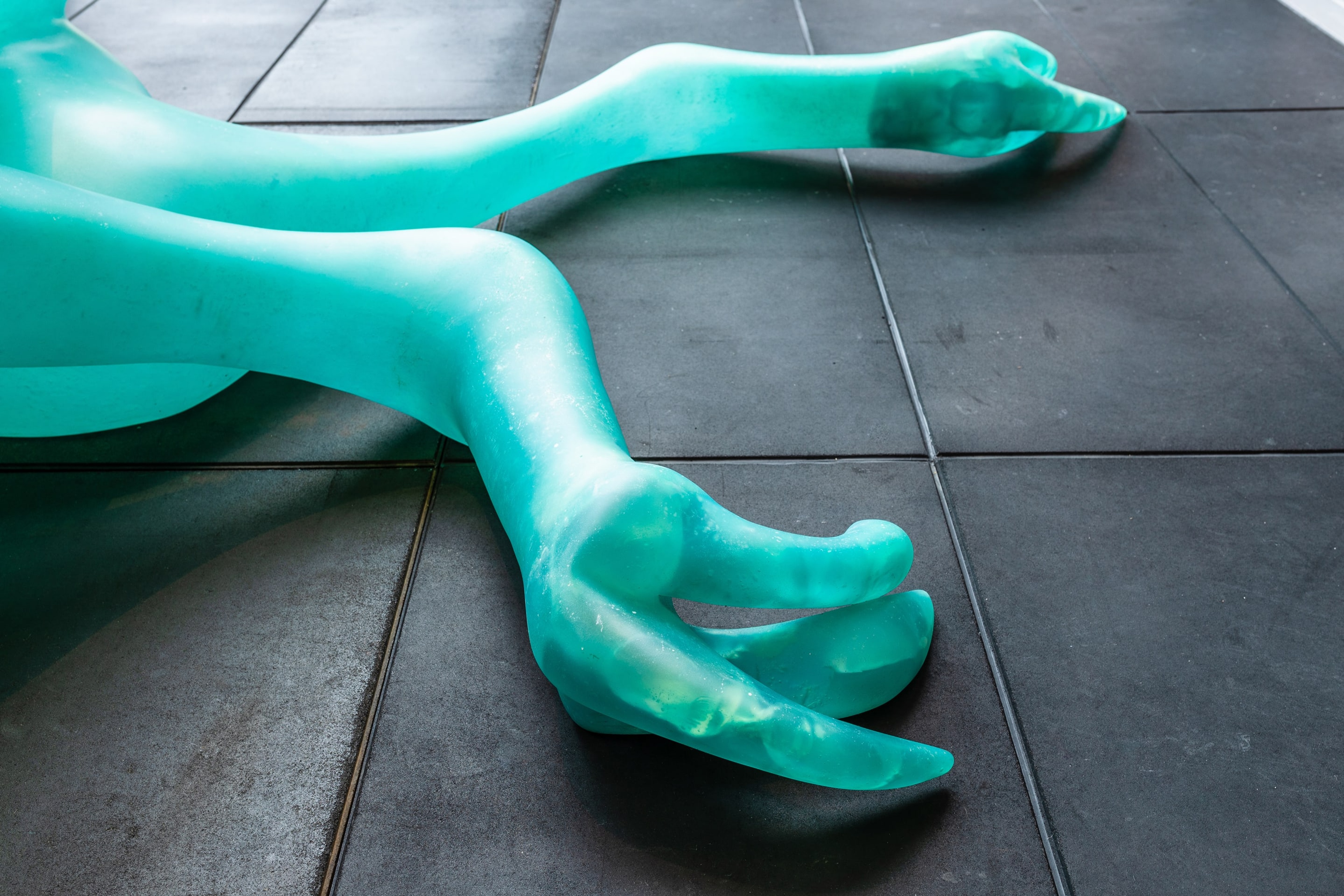
Sorawit Songsataya, The Interior (detail), 2019, fibreglass, polyester resin, acrylic lacquer, Oāmaru stone. Commissioned by Auckland Art Gallery Toi o Tāmaki and supported by the Chartwell Trust and the Contemporary Benefactors of Auckland Art Gallery, 2019. Private collection, Auckland. Installation view, Listening Stones Jumping Rocks, Te Pātaka Toi Adam Art Gallery, Te Herenga Waka Victoria University of Wellington, 2021. Photo: Ted Whitaker
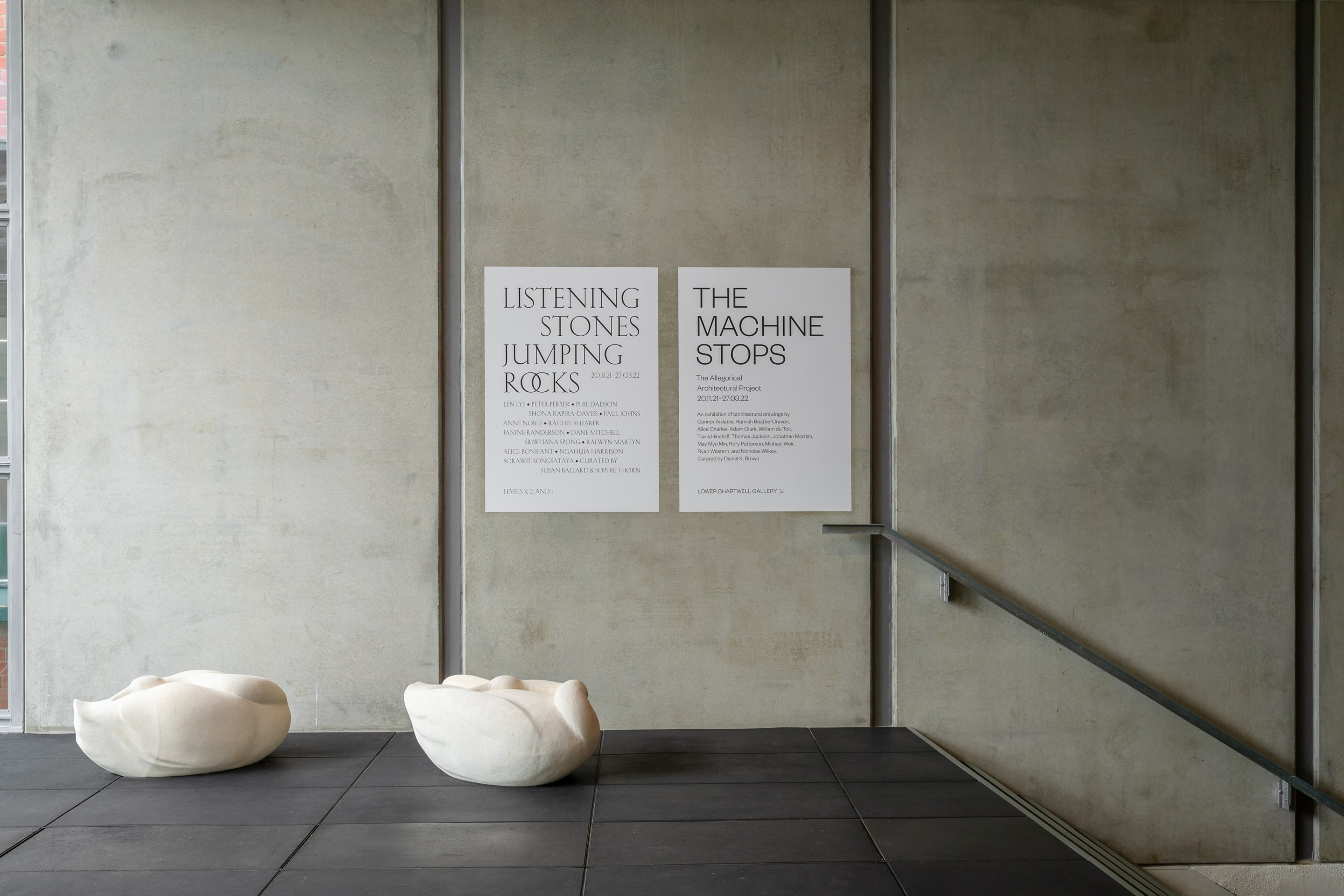
Sorawit Songsataya, The Interior (detail), 2019, fibreglass, polyester resin, acrylic lacquer, Oāmaru stone. Commissioned by Auckland Art Gallery Toi o Tāmaki and supported by the Chartwell Trust and the Contemporary Benefactors of Auckland Art Gallery, 2019. Private collection, Auckland. Installation view, Listening Stones Jumping Rocks, Te Pātaka Toi Adam Art Gallery, Te Herenga Waka Victoria University of Wellington, 2021. Photo: Ted Whitaker
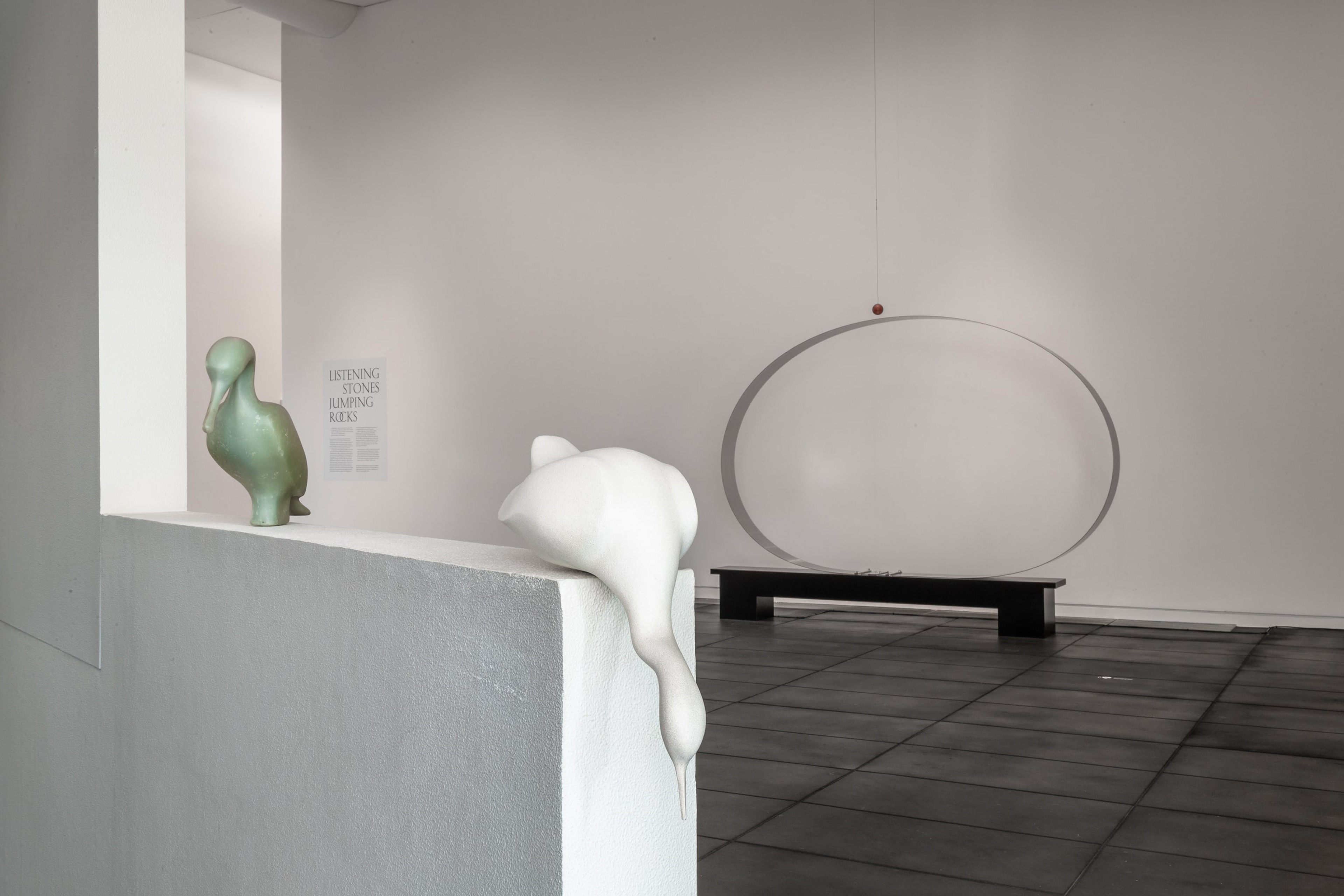
Sorawit Songsataya, The Interior (detail), 2019, fibreglass, polyester resin, acrylic lacquer, Oāmaru stone. Commissioned by Auckland Art Gallery Toi o Tāmaki and supported by the Chartwell Trust and the Contemporary Benefactors of Auckland Art Gallery, 2019. Private collection, Auckland. Installation view, Listening Stones Jumping Rocks, Te Pātaka Toi Adam Art Gallery, Te Herenga Waka Victoria University of Wellington, 2021. Photo: Ted Whitaker
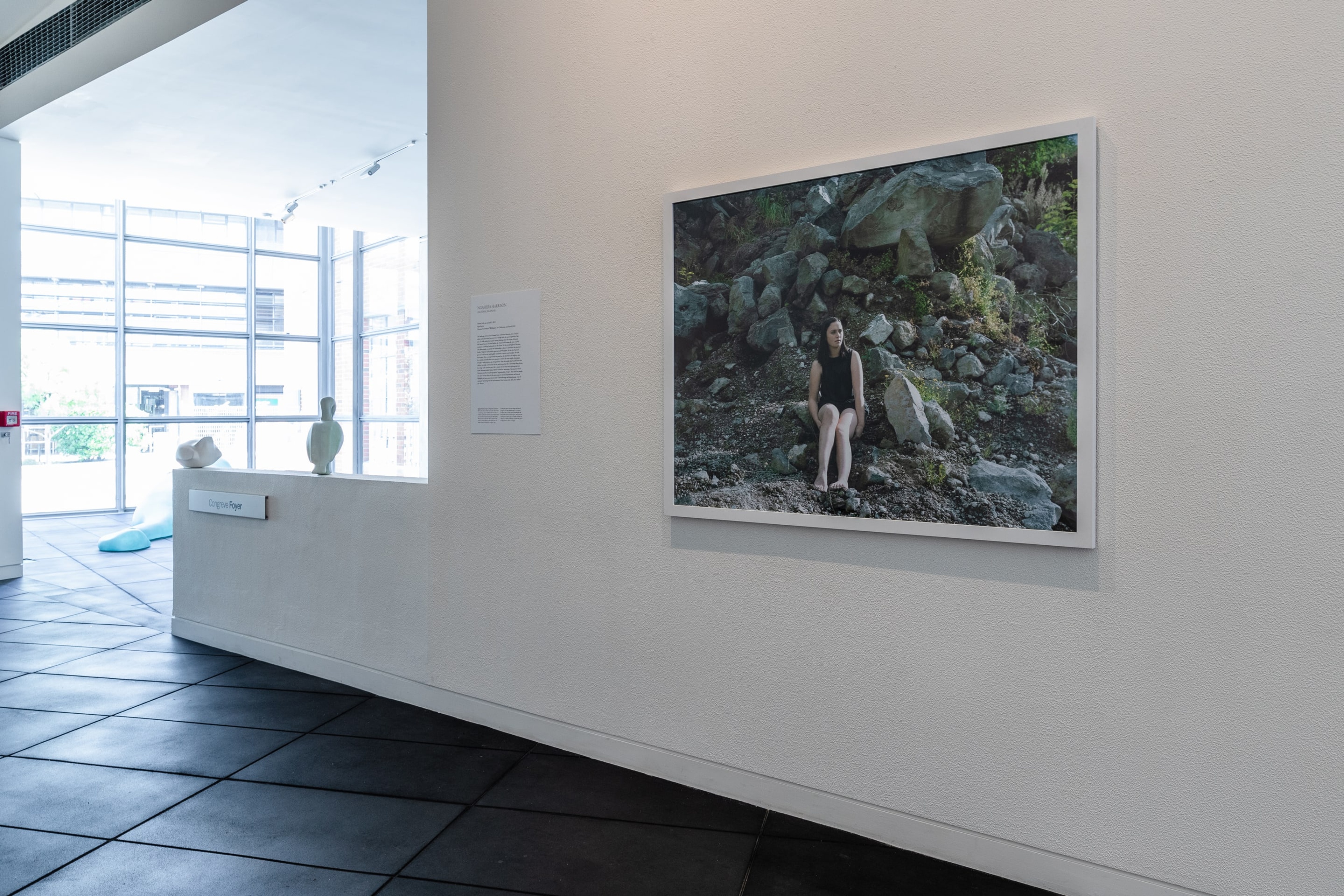
Ngahuia Harrison, Pakora (to be low (of tide)), 2012, digital print. Victoria University of Wellington Art Collection, purchased 2018. Installation view of Installation view, Listening Stones Jumping Rocks, Te Pātaka Toi Adam Art Gallery, Te Herenga Waka Victoria University of Wellington, 2021. Photo: Ted Whitaker
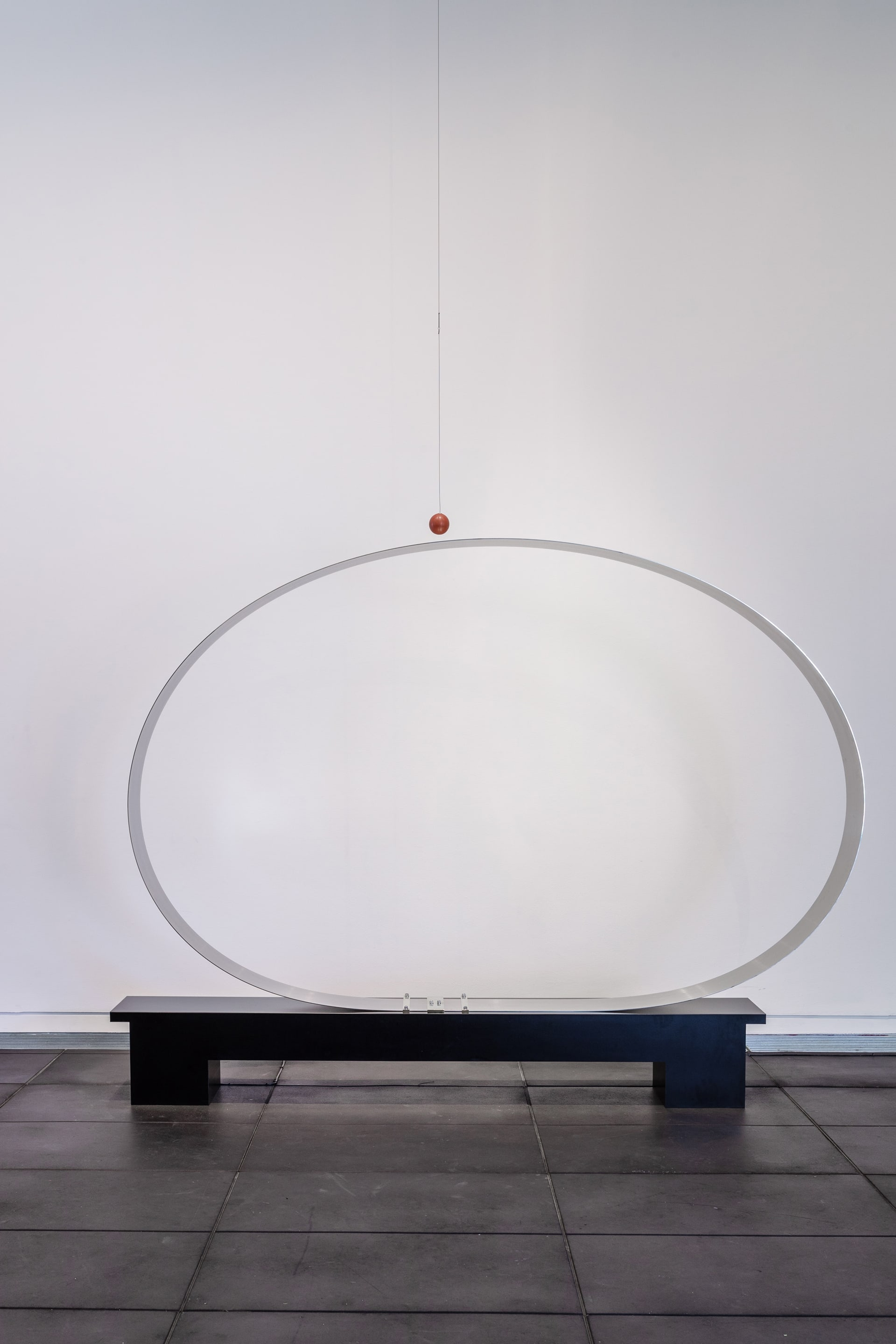
Len Lye, Universe, 1976/1998, steel on wood and Formica base (containing electromagnets). Courtesy of the Len Lye Foundation Collection, Govett-Brewster Art Gallery/Len Lye Centre. Installation view, Listening Stones Jumping Rocks, Te Pātaka Toi Adam Art Gallery, Te Herenga Waka Victoria University of Wellington, 2021. Photo: Ted Whitaker
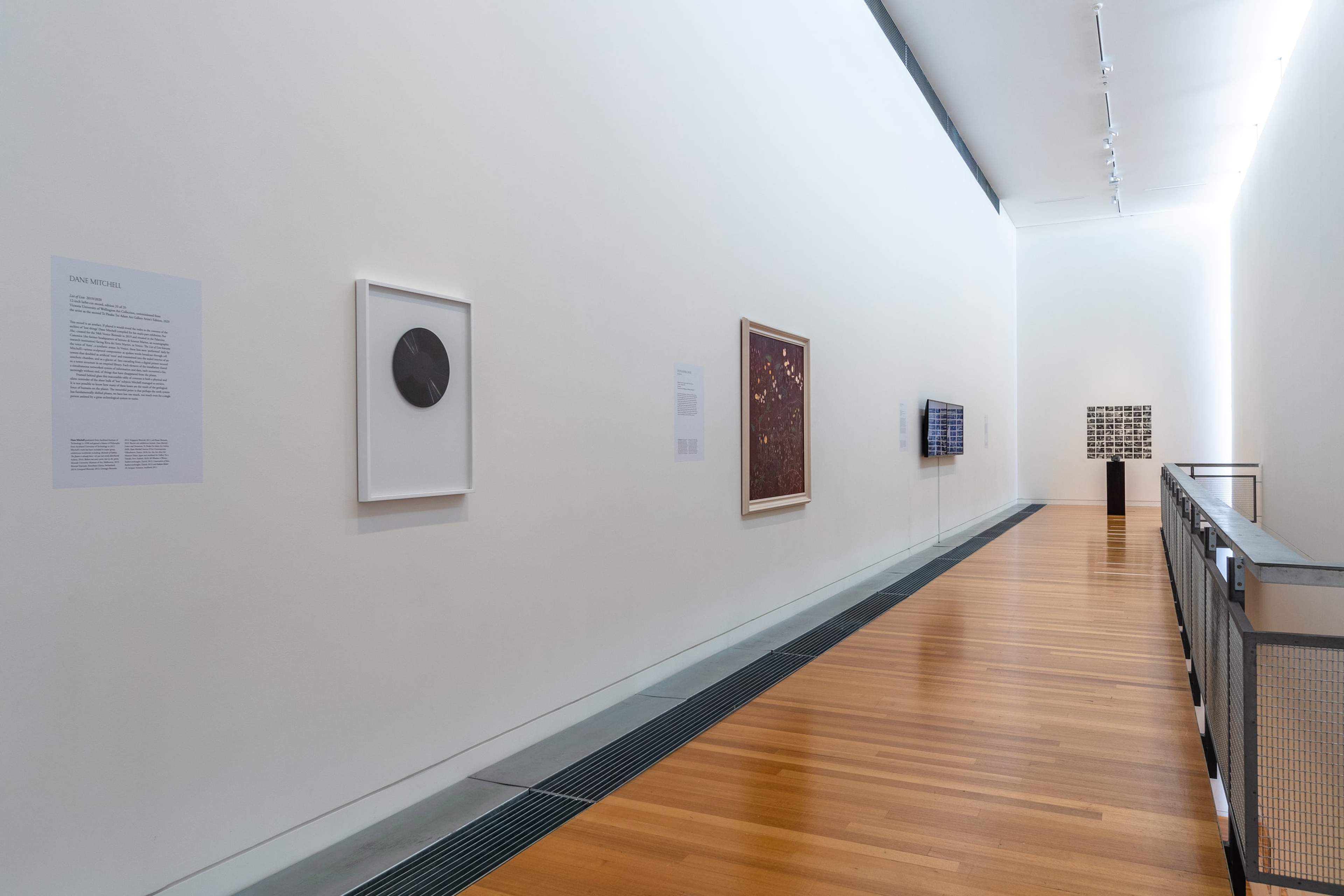
Installation view, Listening Stones Jumping Rocks, Te Pātaka Toi Adam Art Gallery, Te Herenga Waka Victoria University of Wellington, 2021. Photo: Ted Whitaker
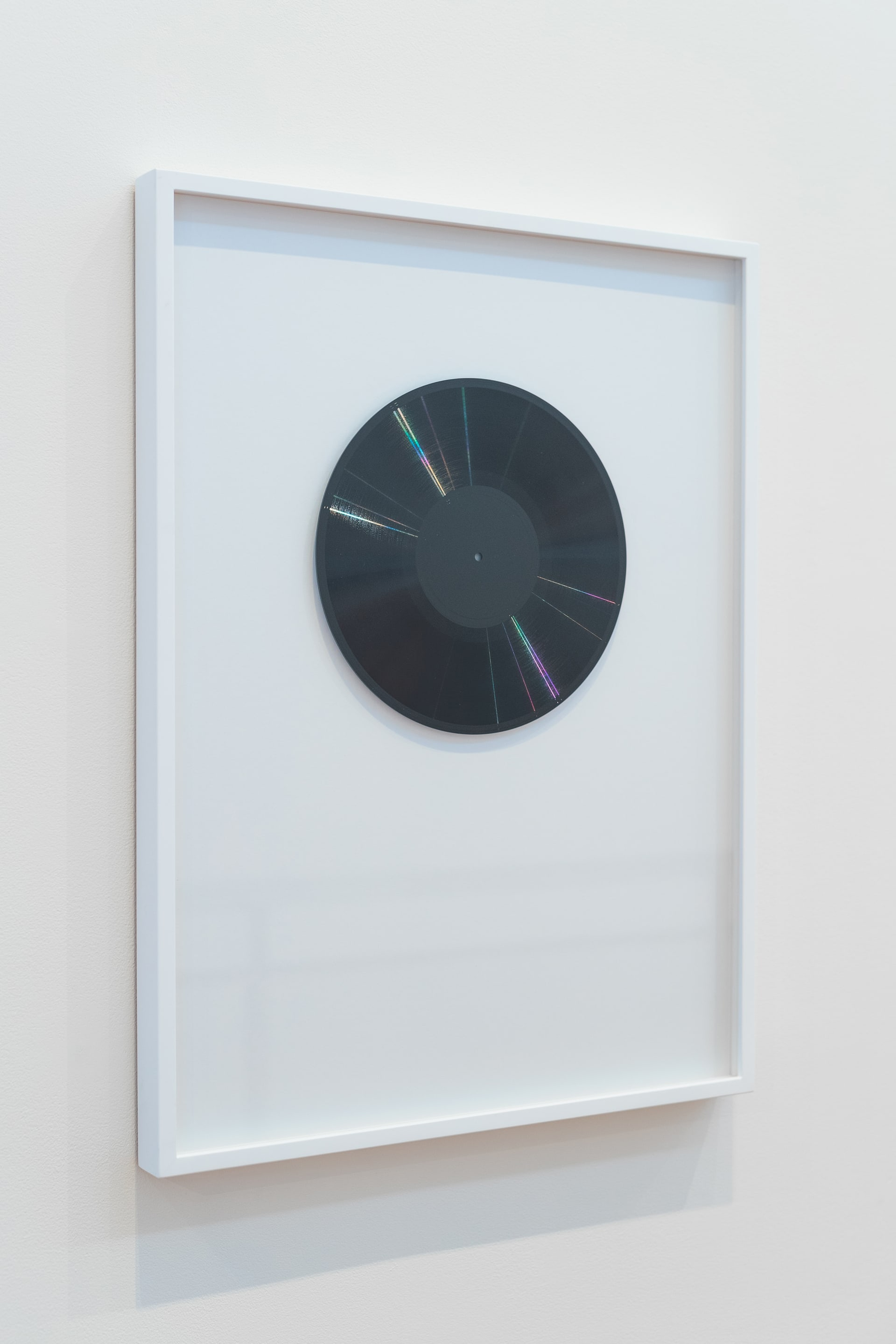
Dane Mitchell, List of Lists, 2019/2020, 12-inch lathe-cut record, edition of 20. Victoria University of Wellington Art Collection, commissioned from the artist as the second Adam Art Gallery Artist’s Edition. Installation view, Listening Stones Jumping Rocks, Te Pātaka Toi Adam Art Gallery, Te Herenga Waka Victoria University of Wellington, 2021. Photo: Ted Whitaker
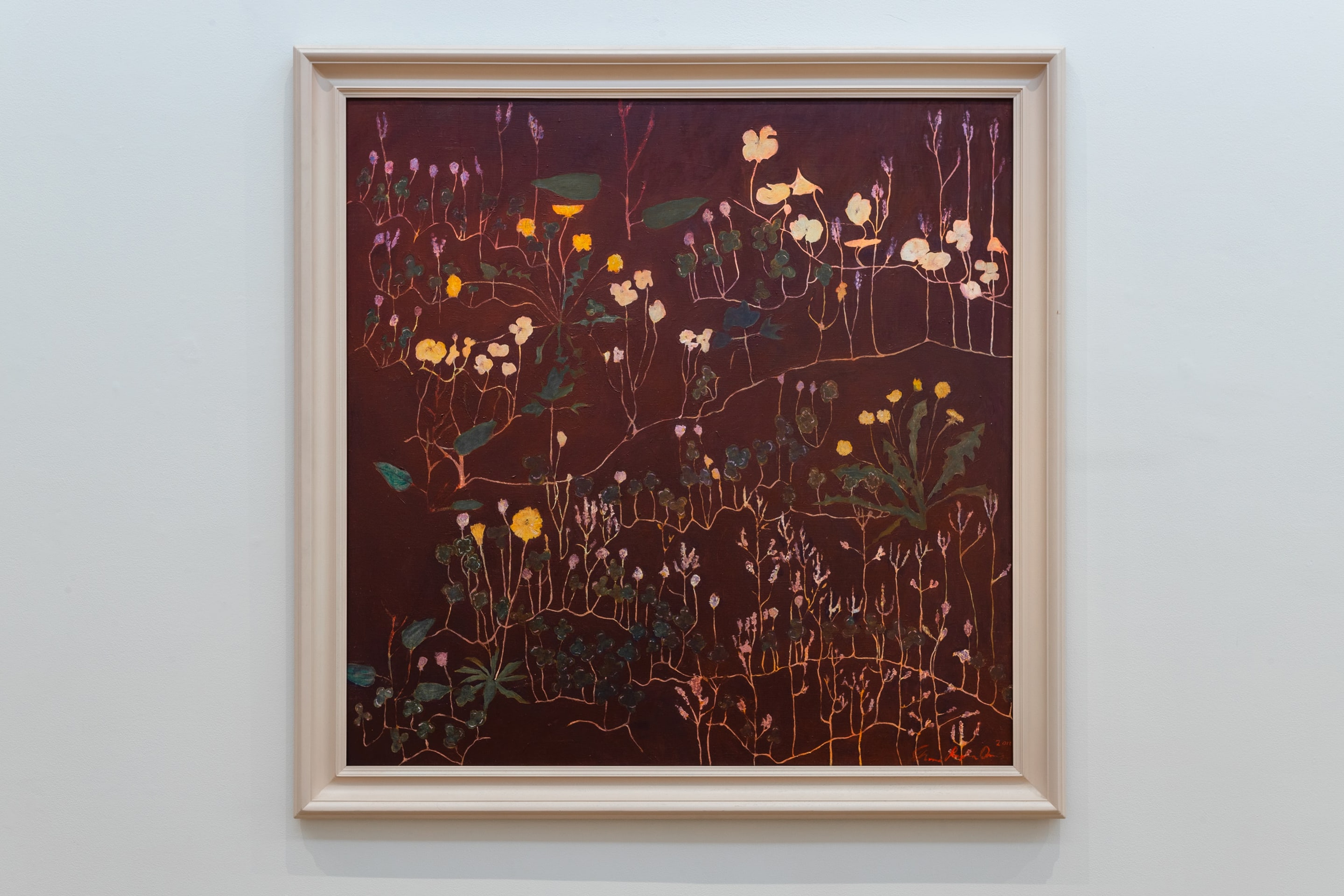
Shona Rapira-Davies, Ka pinea koe e ahau. Ki te pine o te aroha. Ki te pine e kore nei. E waikura e. A lament, 2011, oil on board. Victoria University of Wellington Art Collection, purchased 2011. Installation view, Listening Stones Jumping Rocks, Te Pātaka Toi Adam Art Gallery, Te Herenga Waka Victoria University of Wellington, 2021. Photo: Ted Whitaker
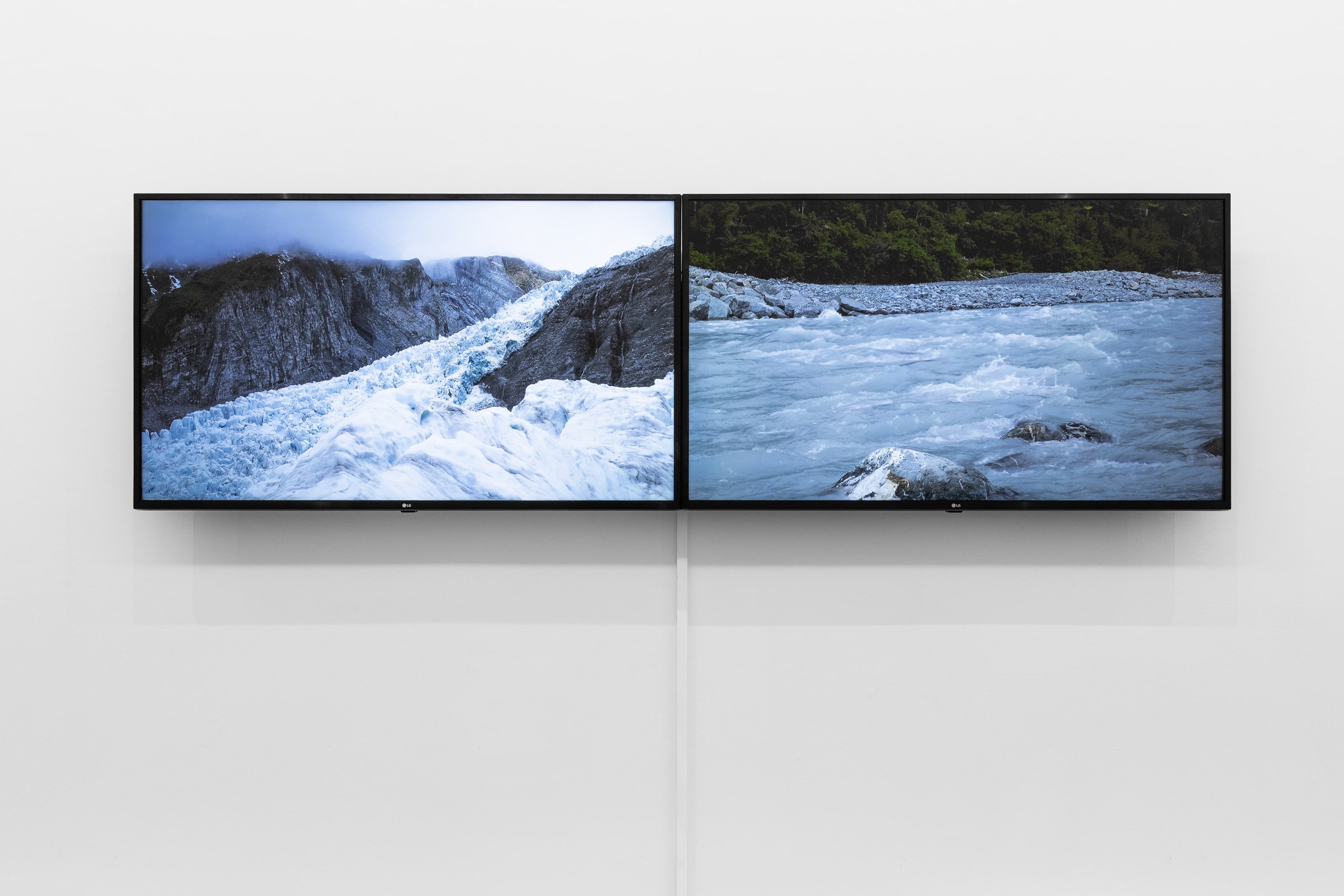
Janine Randerson with Tru Paraha, Waiho, retreat, 2016, two channel digital video with audio, looped, 3 minutes 19 seconds, with composition by Jason Johnston. Made with support from Ngāi Tahu Glacier Guides and Susan Wallace, Te Rūnanga o Makaawhio. Installation view, Listening Stones Jumping Rocks, Te Pātaka Toi Adam Art Gallery, Te Herenga Waka Victoria University of Wellington, 2021. Photo: Ted Whitaker

Janine Randerson with Tru Paraha, Waiho, retreat (still), 2016, two channel digital video with audio, looped, 3 minutes 19 seconds, with composition by Jason Johnston. Made with support from Ngāi Tahu Glacier Guides and Susan Wallace, Te Rūnanga o Makaawhio. Courtesy of the artist.
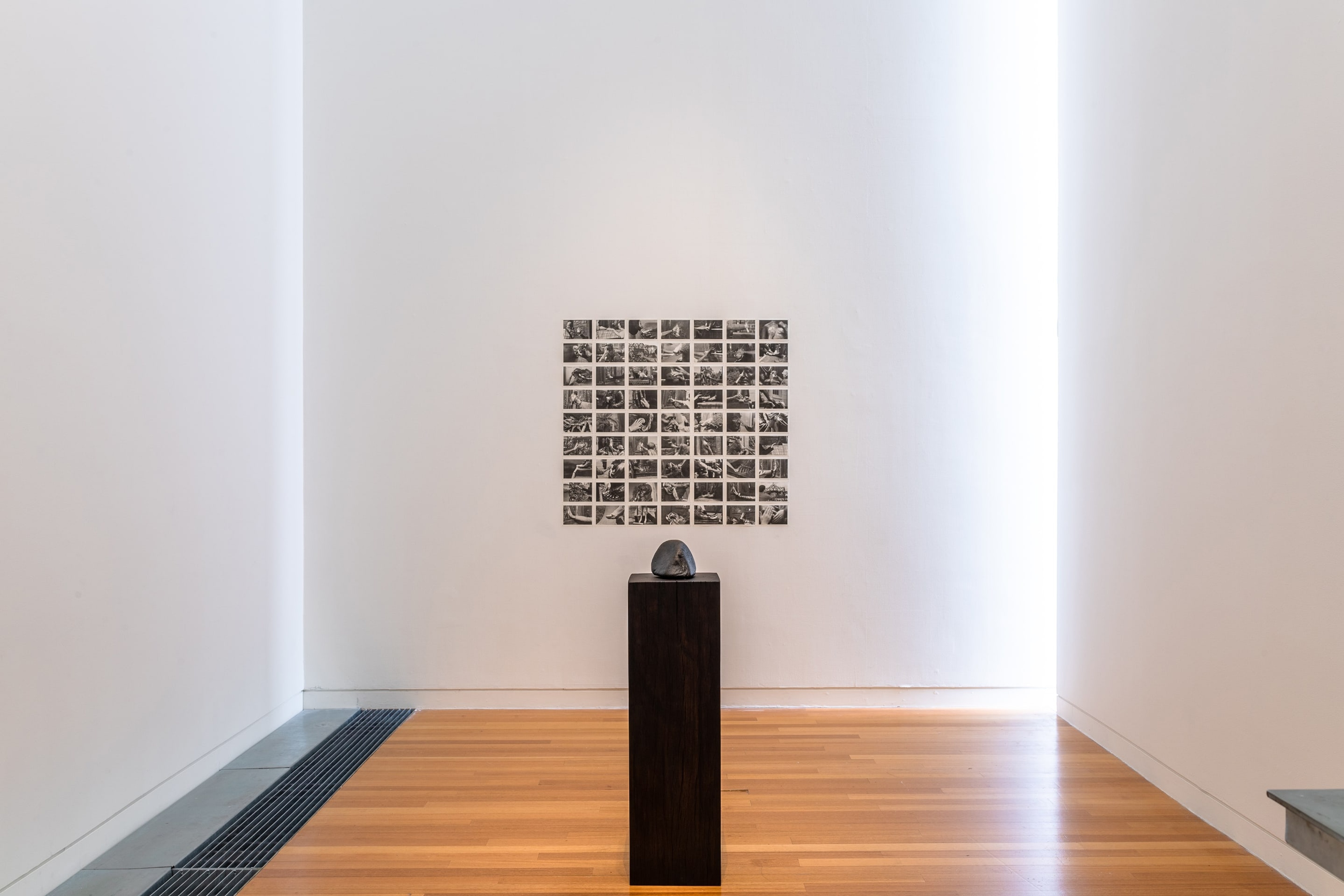
Alice Bonifant, Sometime later, 2012, bronze, hard wood, paper. Installation view, Listening Stones Jumping Rocks, Te Pātaka Toi Adam Art Gallery, Te Herenga Waka Victoria University of Wellington, 2021. Photo: Ted Whitaker
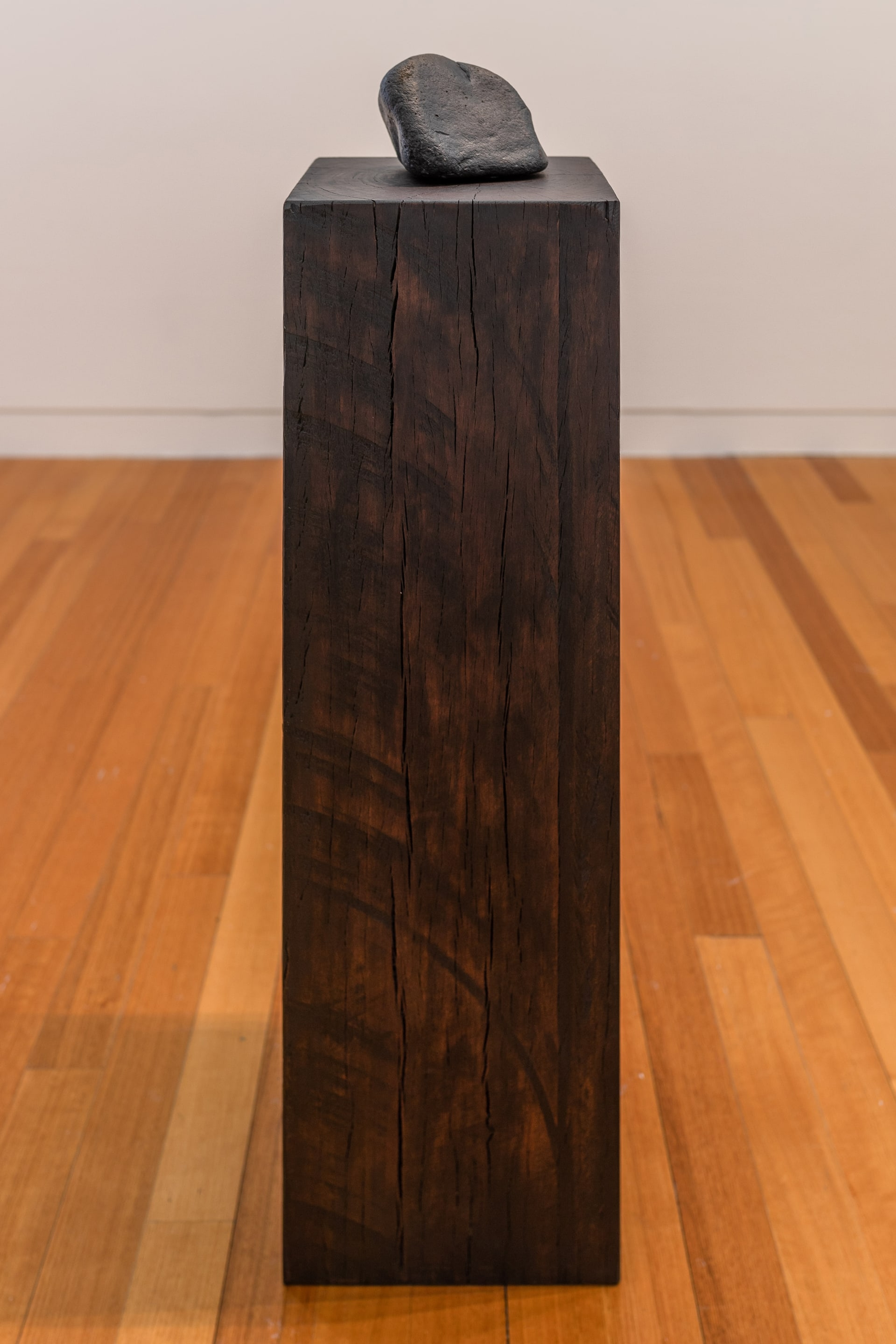
Alice Bonifant, Sometime later (detail), 2012, bronze, hard wood, paper. Installation view, Listening Stones Jumping Rocks, Te Pātaka Toi Adam Art Gallery, Te Herenga Waka Victoria University of Wellington, 2021. Photo: Ted Whitaker
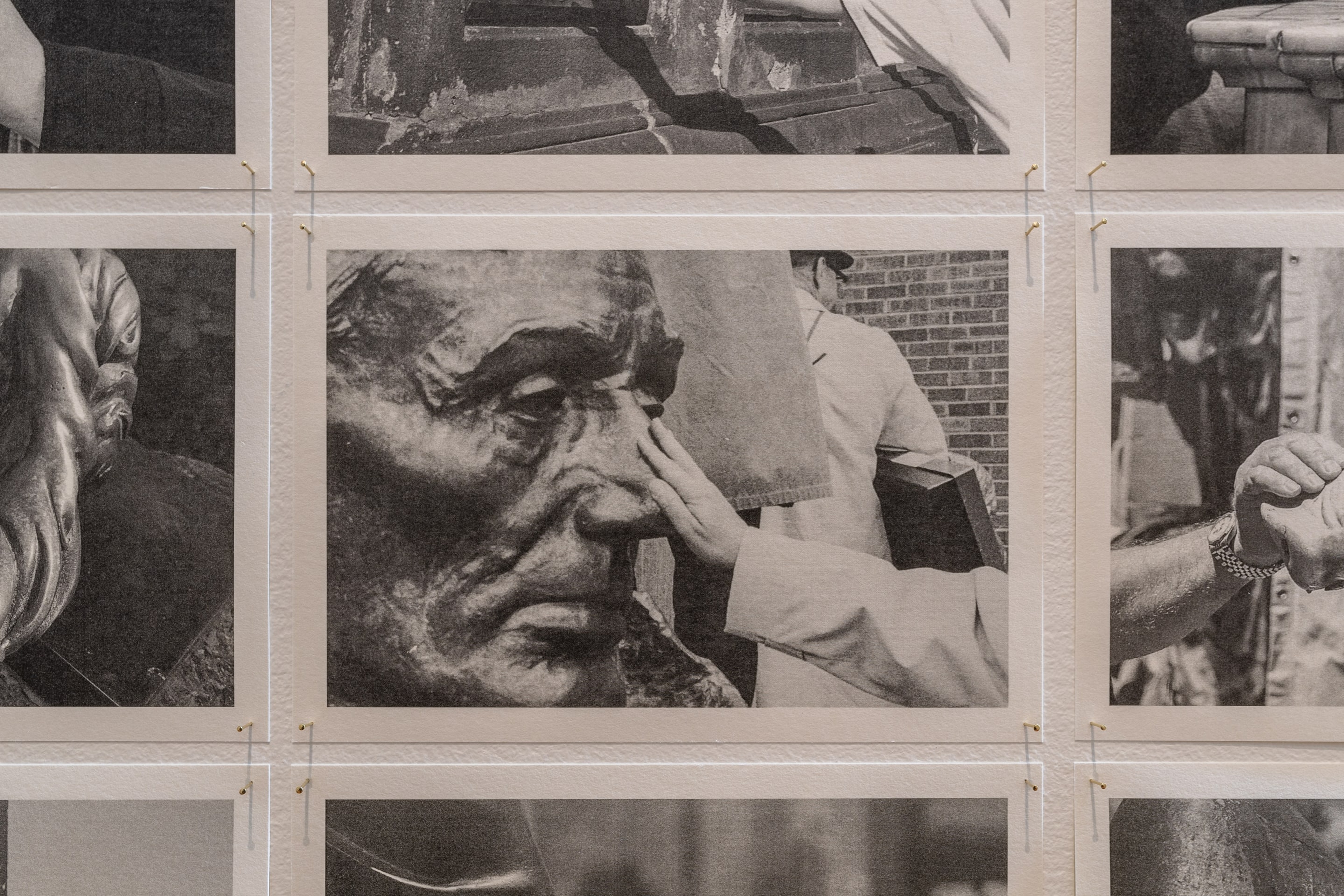
Alice Bonifant, Sometime later (detail), 2012, bronze, hard wood, paper. Installation view, Listening Stones Jumping Rocks, Te Pātaka Toi Adam Art Gallery, Te Herenga Waka Victoria University of Wellington, 2021. Photo: Ted Whitaker
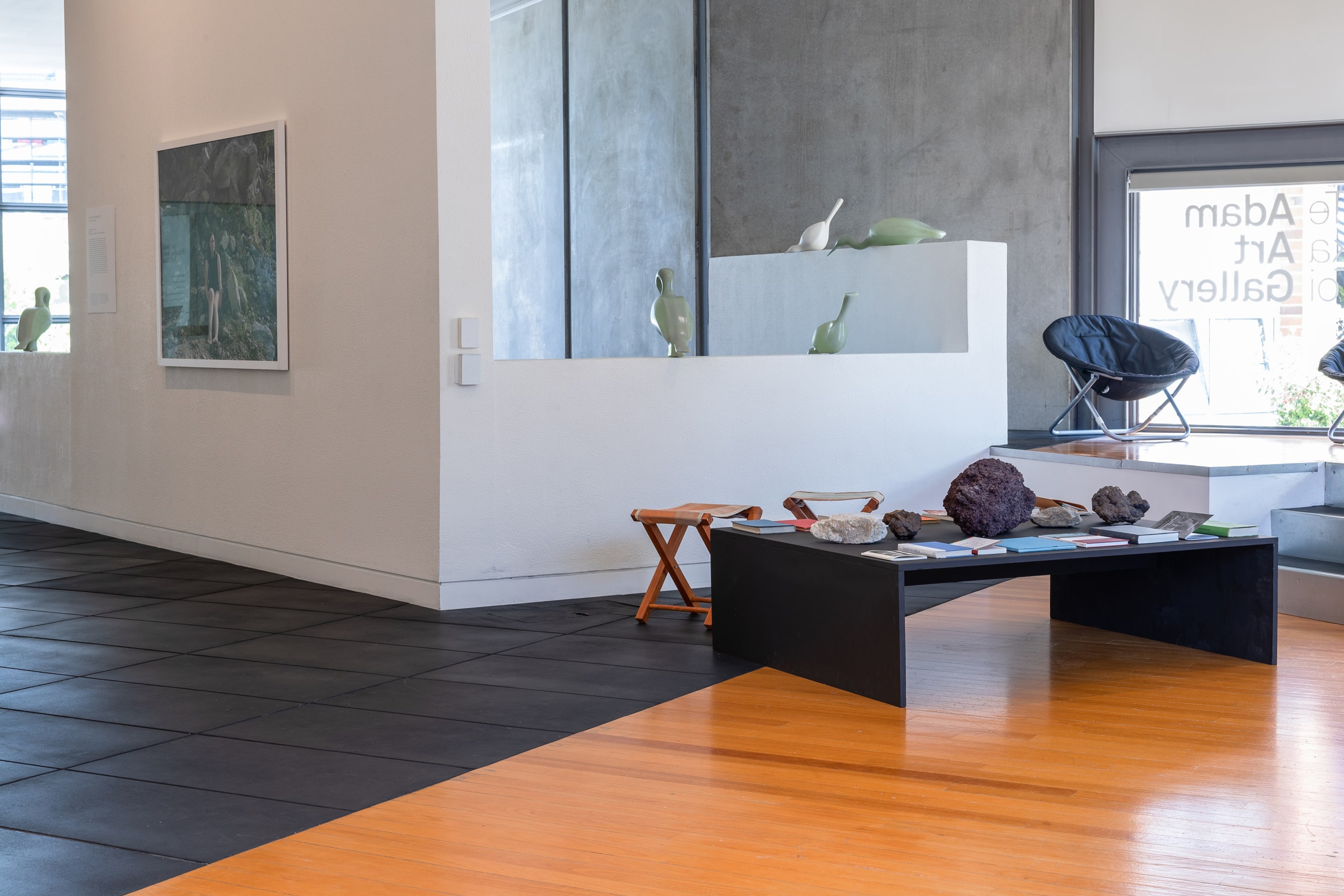
Installation view, Listening Stones Jumping Rocks, Te Pātaka Toi Adam Art Gallery, Te Herenga Waka Victoria University of Wellington, 2021. Photo: Ted Whitaker

Raewyn Martyn, For Loan, 2012, wood, canvas, paint, Victoria University of Wellington Art Collection, accessioned 2016. Installation view, Listening Stones Jumping Rocks, Te Pātaka Toi Adam Art Gallery, Te Herenga Waka Victoria University of Wellington, 2021. Photo: Ted Whitaker
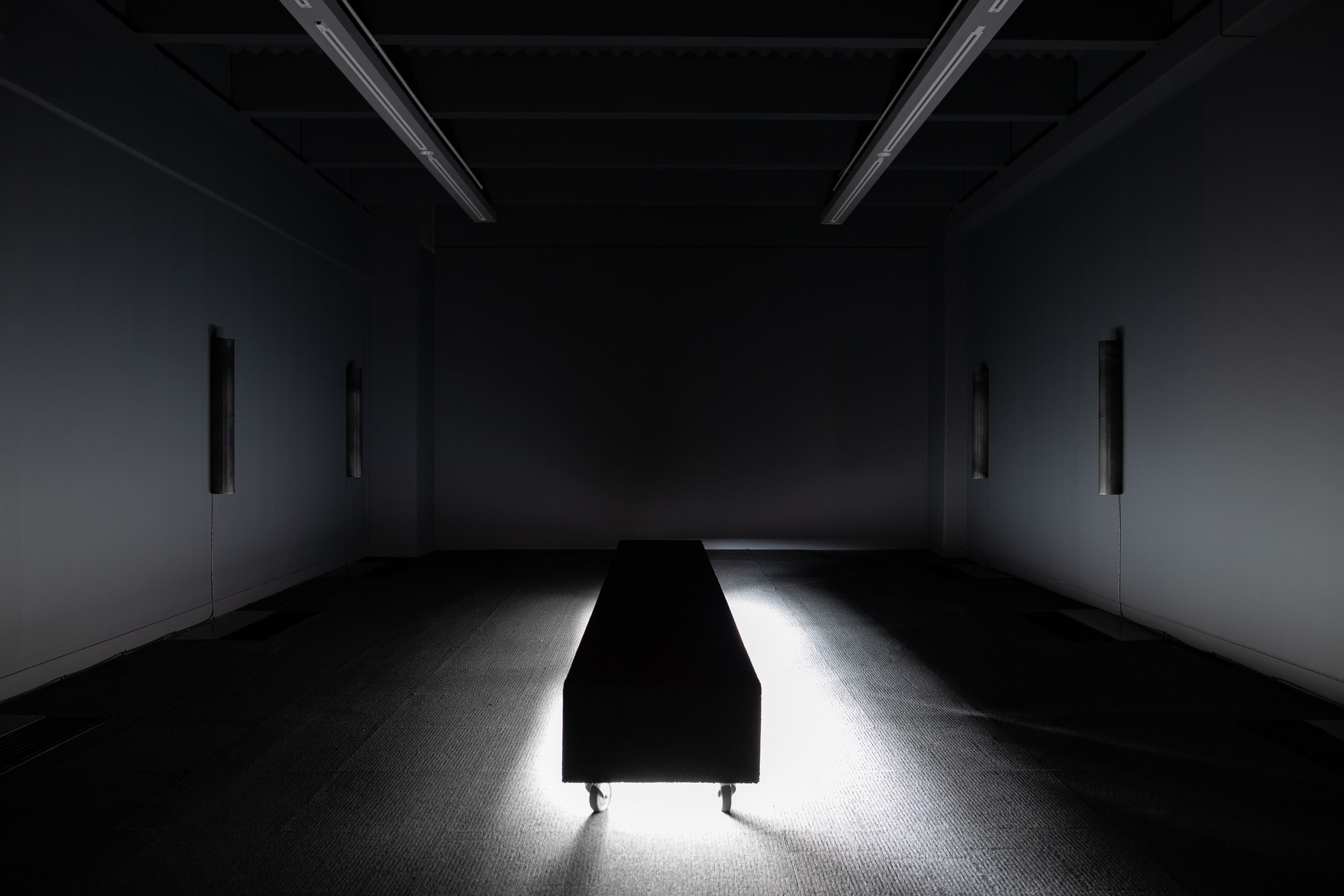
Rachel Shearer, Te Oro o Te Ao, 2018, eight-channel sound installation, Courtesy the artist. Installation view, Listening Stones Jumping Rocks, Te Pātaka Toi Adam Art Gallery, Te Herenga Waka Victoria University of Wellington, 2021. Photo: Ted Whitaker
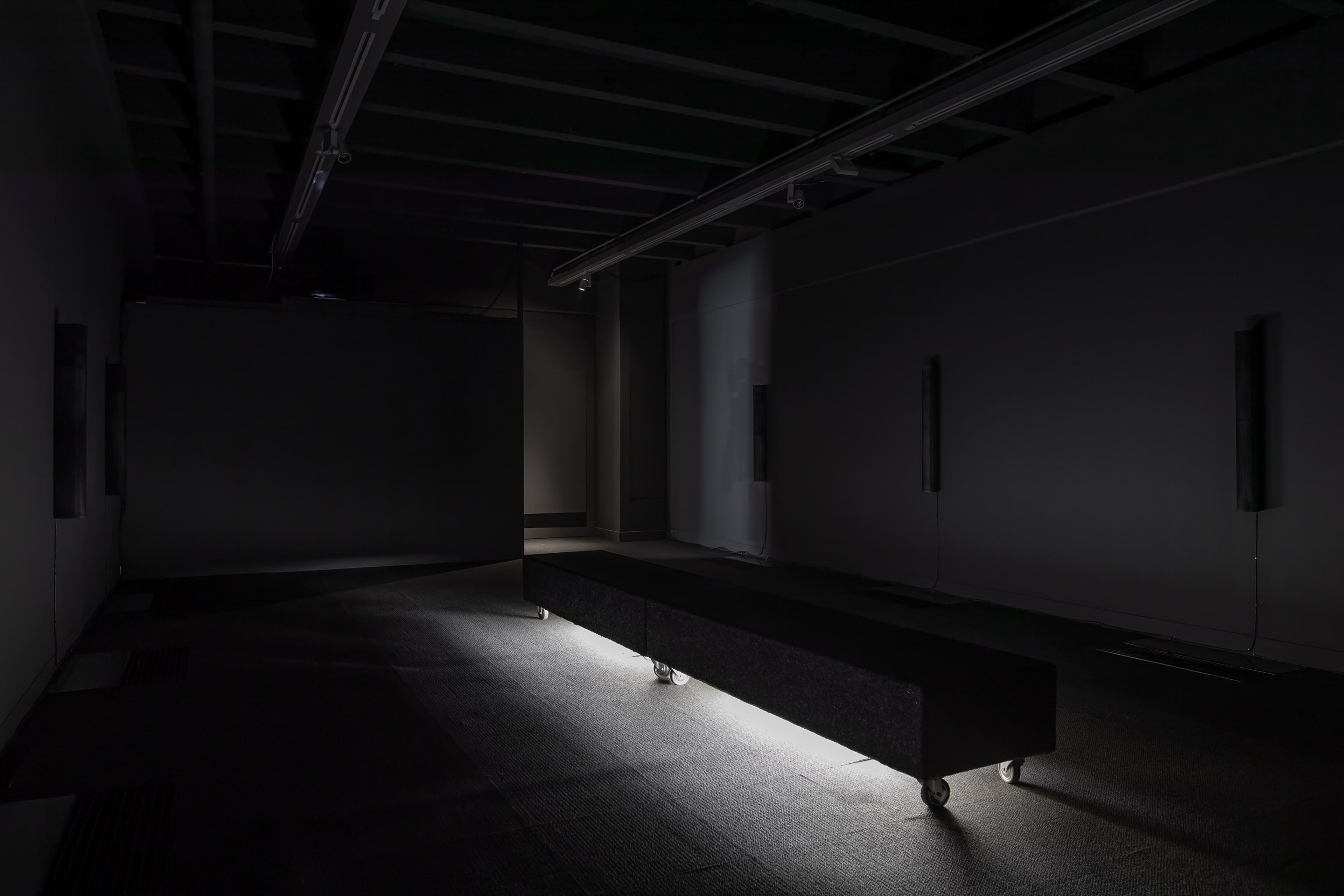
Rachel Shearer, Te Oro o Te Ao, 2018, eight-channel sound installation, Courtesy the artist. Installation view, Listening Stones Jumping Rocks, Te Pātaka Toi Adam Art Gallery, Te Herenga Waka Victoria University of Wellington, 2021. Photo: Ted Whitaker

Paul Johns, Been Here Long?, 2020, rocks, neon, transformers, wood, acrylic, and stainless steel. Courtesy Paul Johns. Installation view, Listening Stones Jumping Rocks, Te Pātaka Toi Adam Art Gallery, Te Herenga Waka Victoria University of Wellington, 2021. Photo: Ted Whitaker

Paul Johns, Been Here Long? (detail), 2020, rocks, neon, transformers, wood, acrylic, and stainless steel. Courtesy Paul Johns. Installation view, Listening Stones Jumping Rocks, Te Pātaka Toi Adam Art Gallery, Te Herenga Waka Victoria University of Wellington, 2021. Photo: Ted Whitaker

Paul Johns, Been Here Long? (detail), 2020, rocks, neon, transformers, wood, acrylic, and stainless steel. Courtesy Paul Johns. Installation view, Listening Stones Jumping Rocks, Te Pātaka Toi Adam Art Gallery, Te Herenga Waka Victoria University of Wellington, 2021. Photo: Ted Whitaker
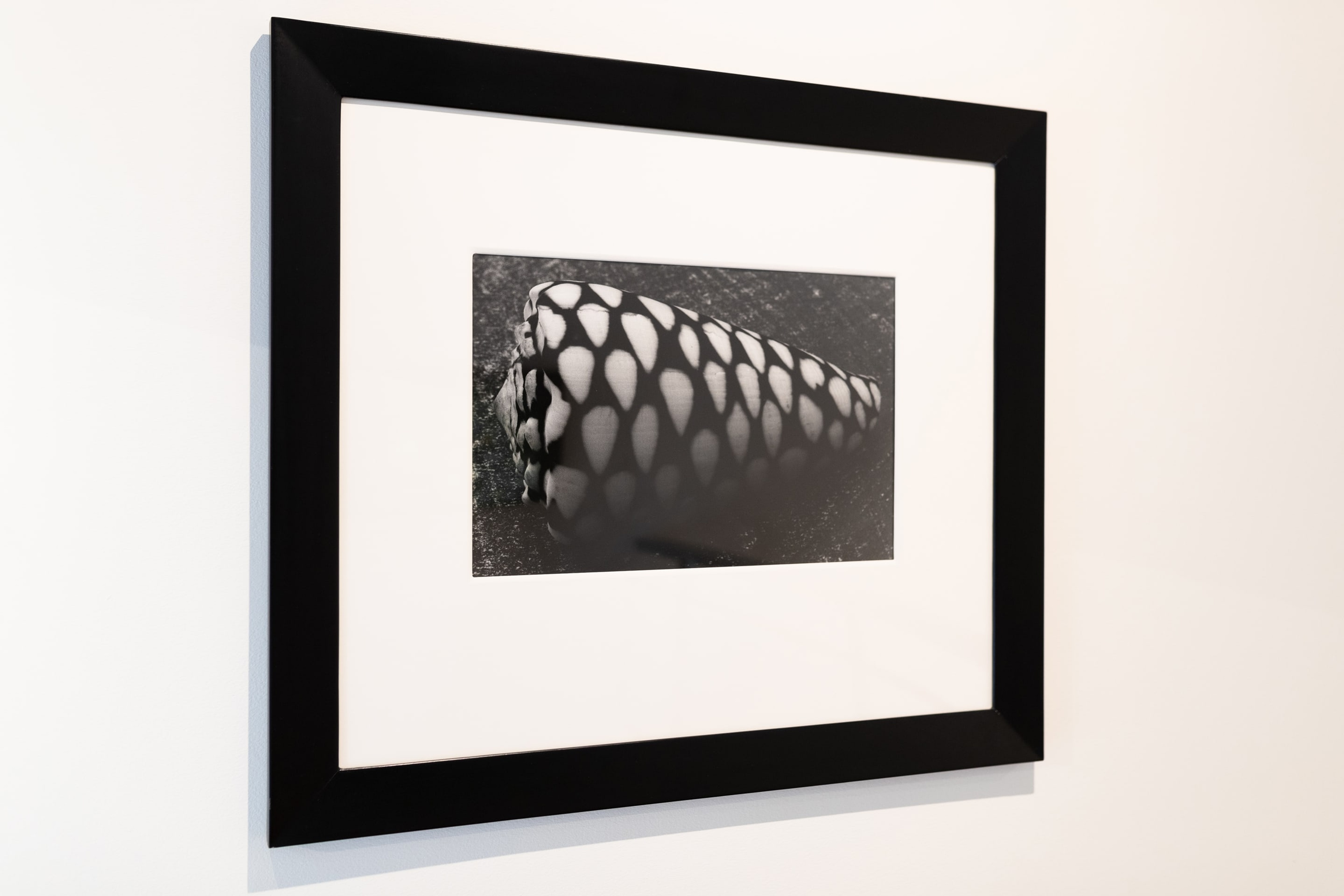
Peter Peryer, After Rembrandt, 1995, silver gelatin print. Victoria University of Wellington Art Collection, purchased 1997. Installation view, Listening Stones Jumping Rocks, Te Pātaka Toi Adam Art Gallery, Te Herenga Waka Victoria University of Wellington, 2021. Photo: Ted Whitaker

Sriwhana Spong, Muttnik, 2005, edition of three, super 8 transferred to DVD, 4:5 ratio, 3 minutes 38 seconds, sound, colour. Victoria University of Wellington Art Collection, purchased 2011. Installation view, Listening Stones Jumping Rocks, Te Pātaka Toi Adam Art Gallery, Te Herenga Waka Victoria University of Wellington, 2021. Photo: Ted Whitaker
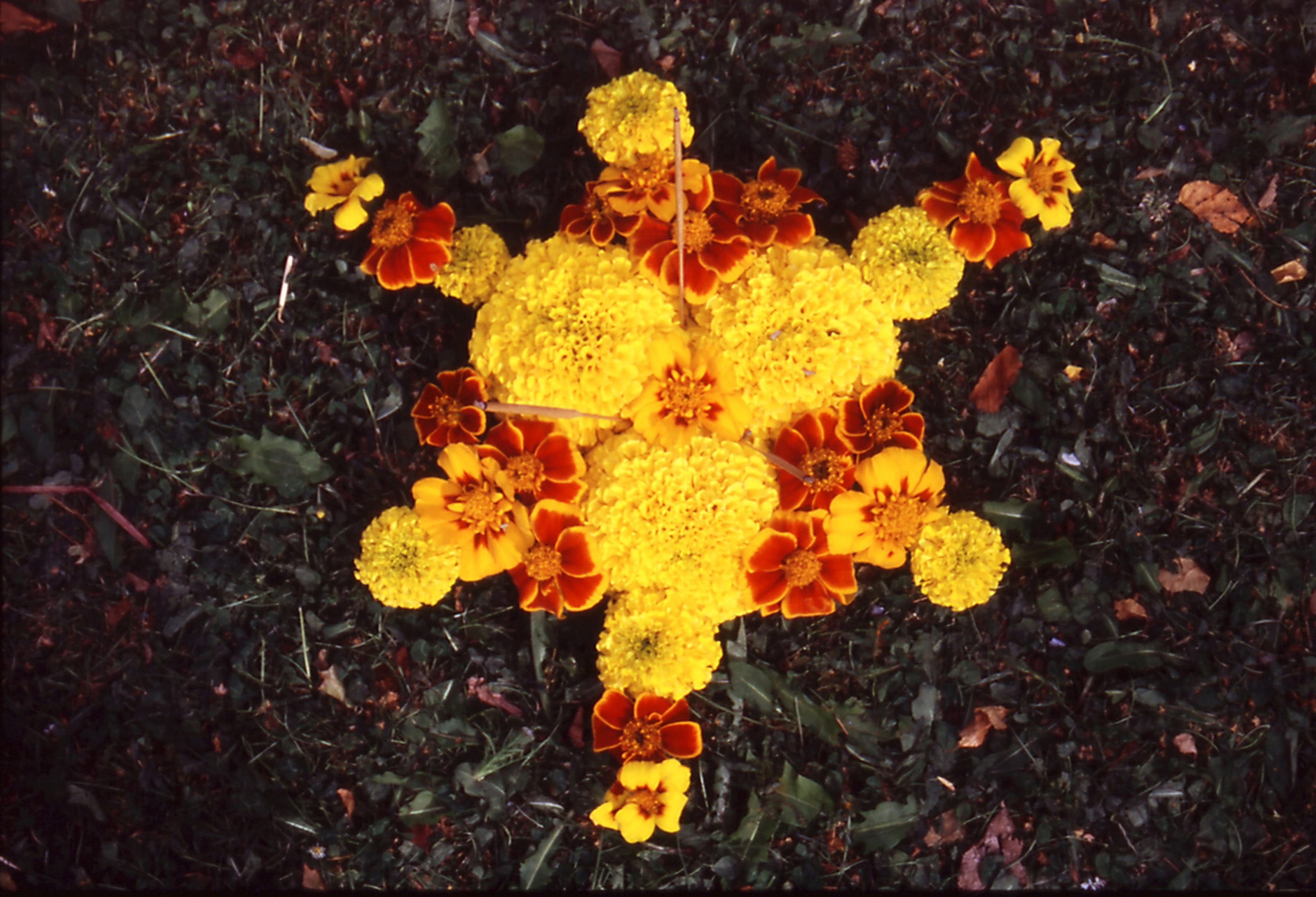
Sriwhana Spong, Muttnik (still), 2005, edition of three, super 8 transferred to DVD, 4:5 ratio, 3 minutes 38 seconds, sound, colour. Victoria University of Wellington Art Collection, purchased 2011.
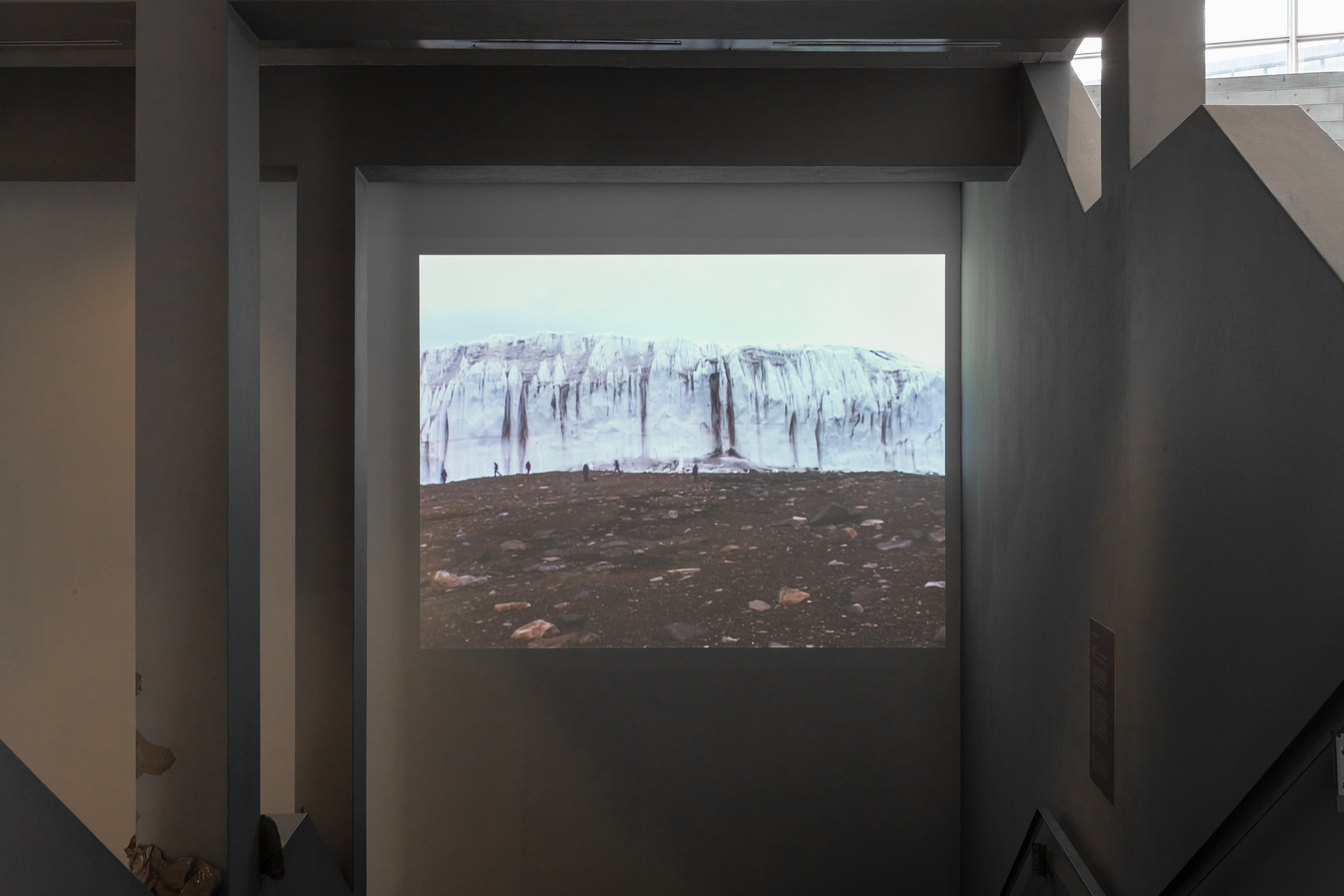
Phil Dadson, Echo-Logo, 2003-2004, from the Polar Projects series, single channel DVD, 7 minutes, looped. Victoria University of Wellington Art Collection, purchased 2011. Installation view, Listening Stones Jumping Rocks, Te Pātaka Toi Adam Art Gallery, Te Herenga Waka Victoria University of Wellington, 2021. Photo: Ted Whitaker
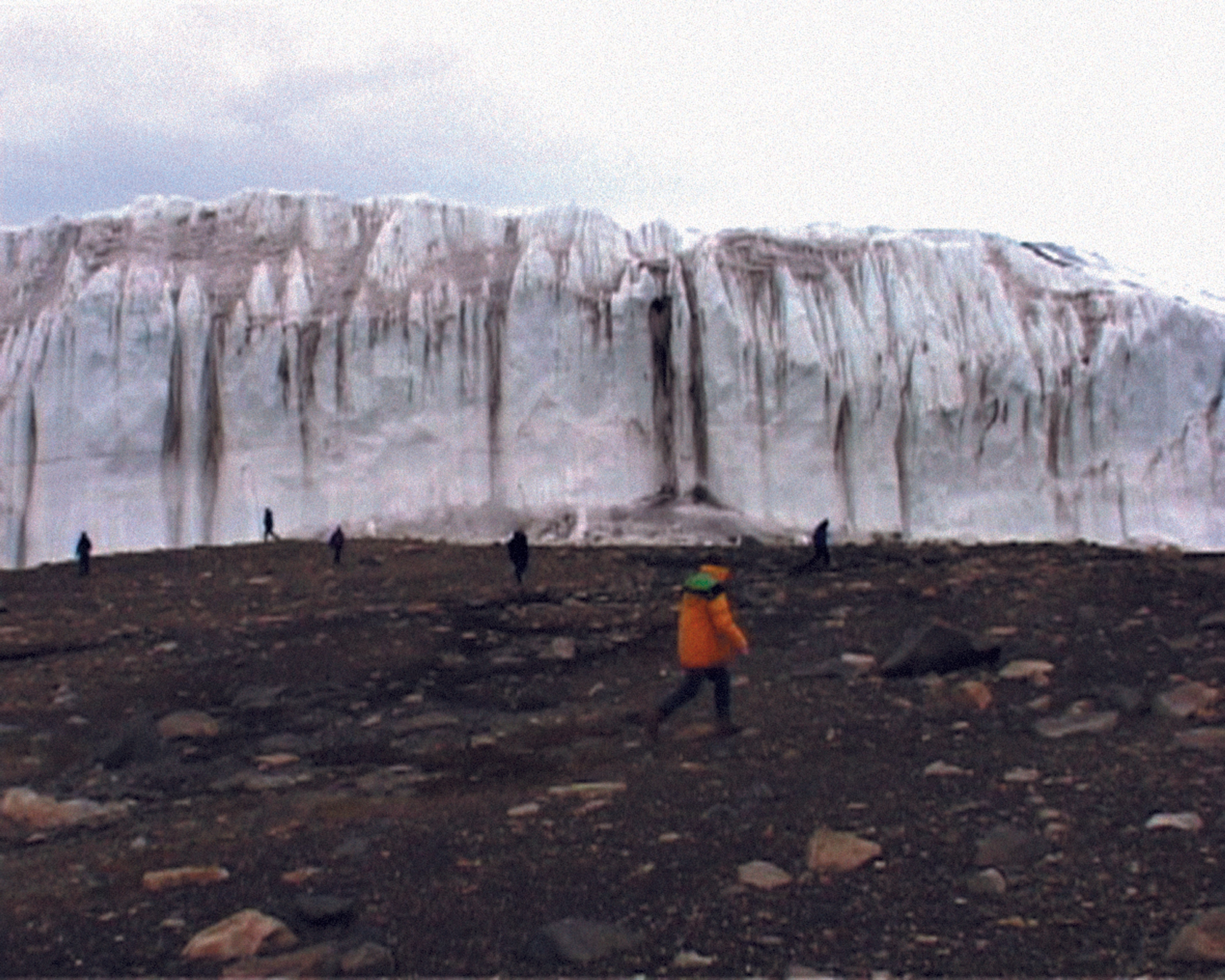
Phil Dadson, Echo-Logo (still), 2003-2004, from the Polar Projects series, single channel DVD, 7 minutes, looped. Victoria University of Wellington Art Collection, purchased 2011.
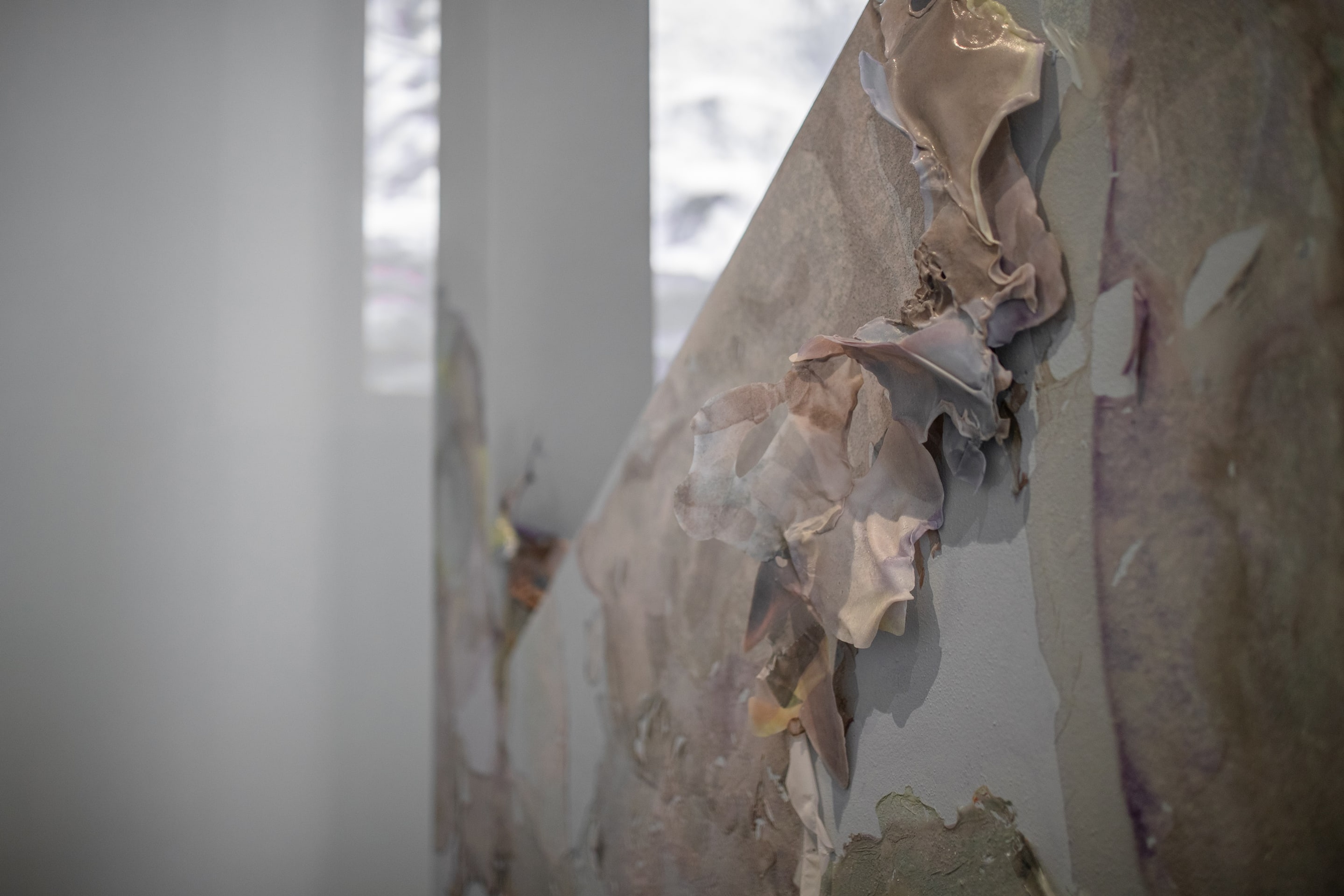
Raewyn Martyn, Greywacke love poems returns: returns (detail),2019/2021, biodegradable paintings made from mineral and plant-based pigments, and biopolymers, courtesy the artist. Installation view, Listening Stones Jumping Rocks, Te Pātaka Toi Adam Art Gallery, Te Herenga Waka Victoria University of Wellington, 2021. Photo: Ted Whitaker
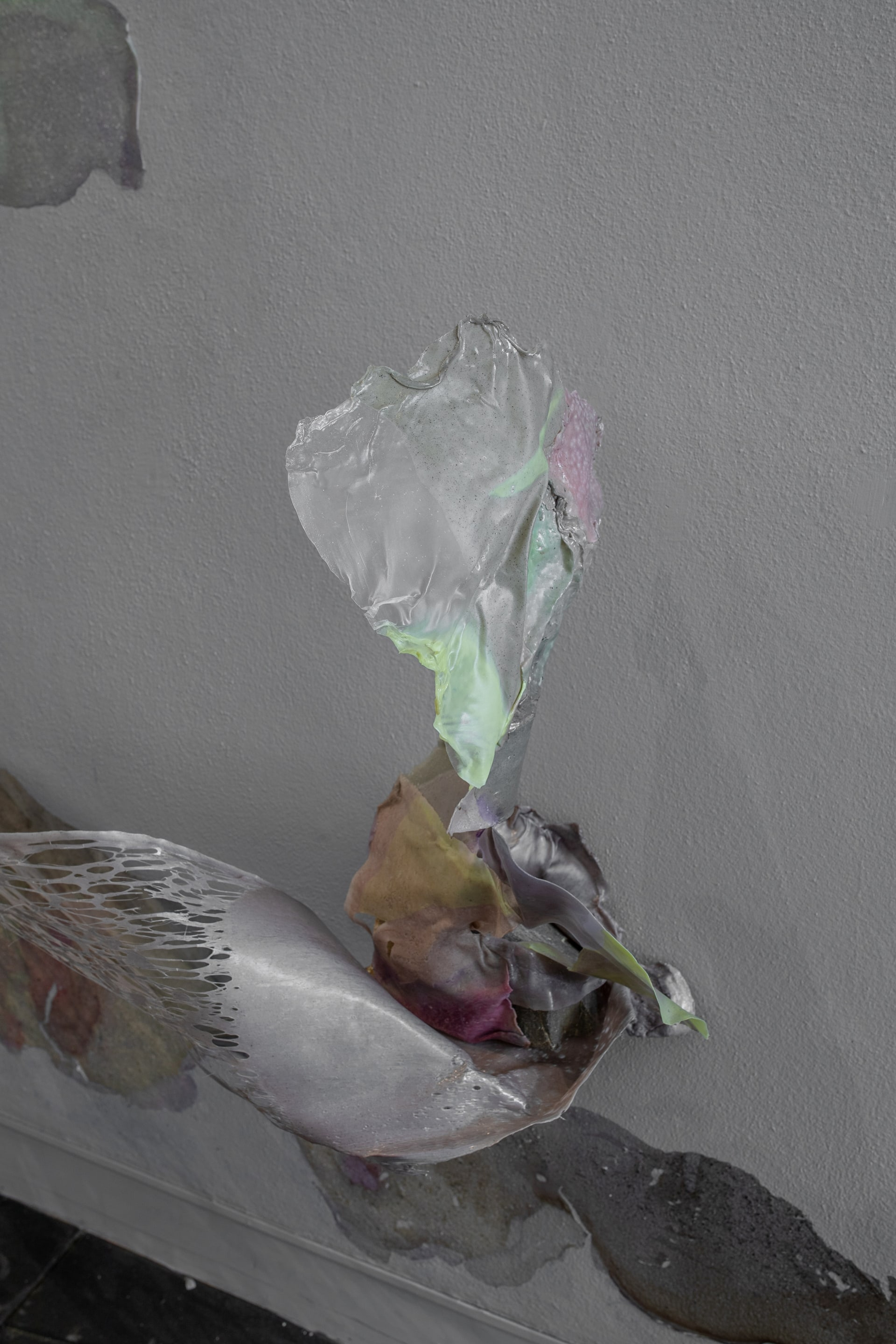
Raewyn Martyn, Greywacke love poems returns: returns (detail), 2019/2021, biodegradable paintings made from mineral and plant-based pigments, and biopolymers, courtesy the artist. Installation view, Listening Stones Jumping Rocks, Te Pātaka Toi Adam Art Gallery, Te Herenga Waka Victoria University of Wellington, 2021. Photo: Ted Whitaker
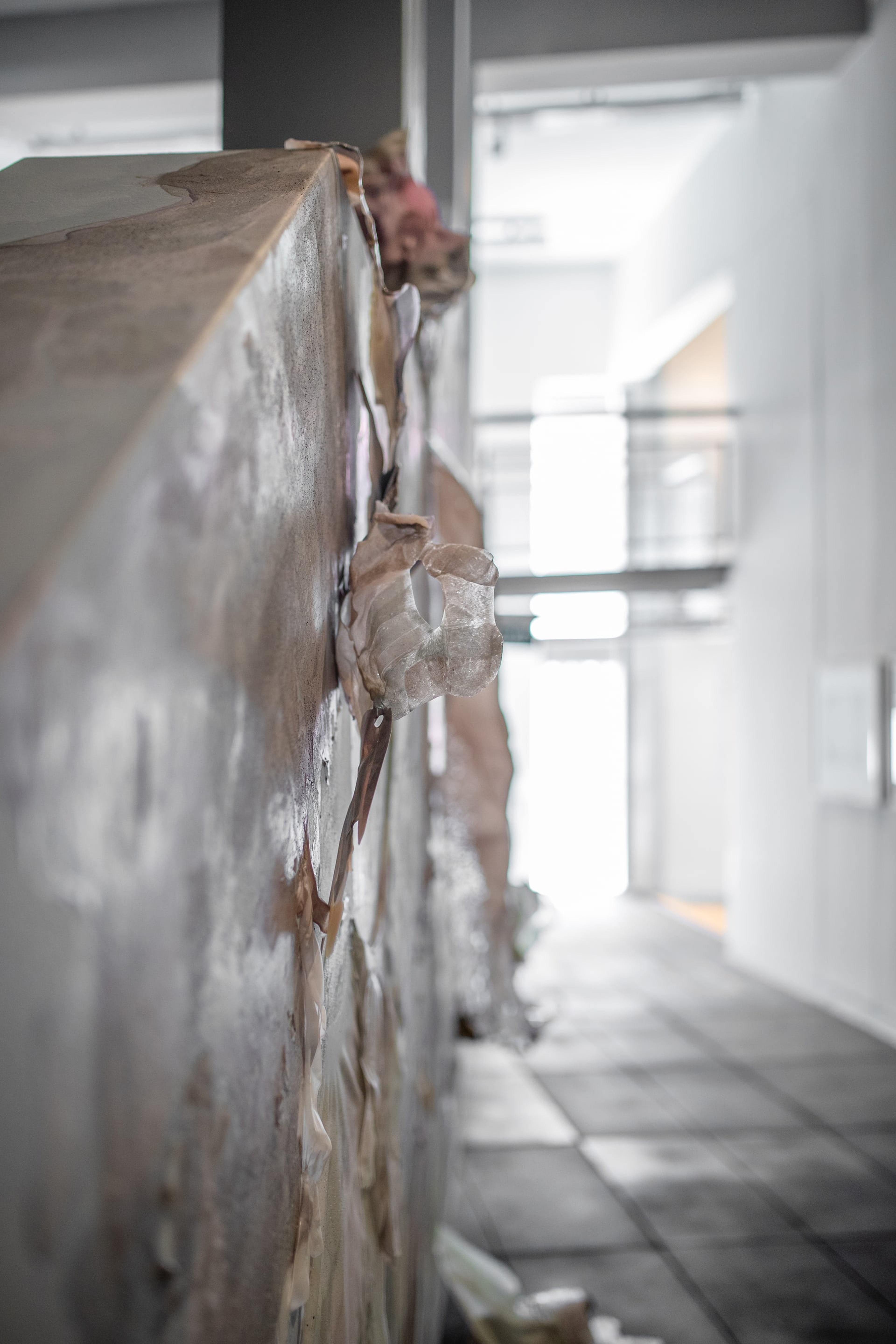
Raewyn Martyn, Greywacke love poems returns: returns (detail),2019/2021, biodegradable paintings made from mineral and plant-based pigments, and biopolymers, courtesy the artist. Installation view, Listening Stones Jumping Rocks, Te Pātaka Toi Adam Art Gallery, Te Herenga Waka Victoria University of Wellington, 2021. Photo: Ted Whitaker

Raewyn Martyn, Greywacke love poems returns: returns (detail),2019/2021, biodegradable paintings made from mineral and plant-based pigments, and biopolymers, courtesy the artist. Installation view, Listening Stones Jumping Rocks, Te Pātaka Toi Adam Art Gallery, Te Herenga Waka Victoria University of Wellington, 2021. Photo: Ted Whitaker
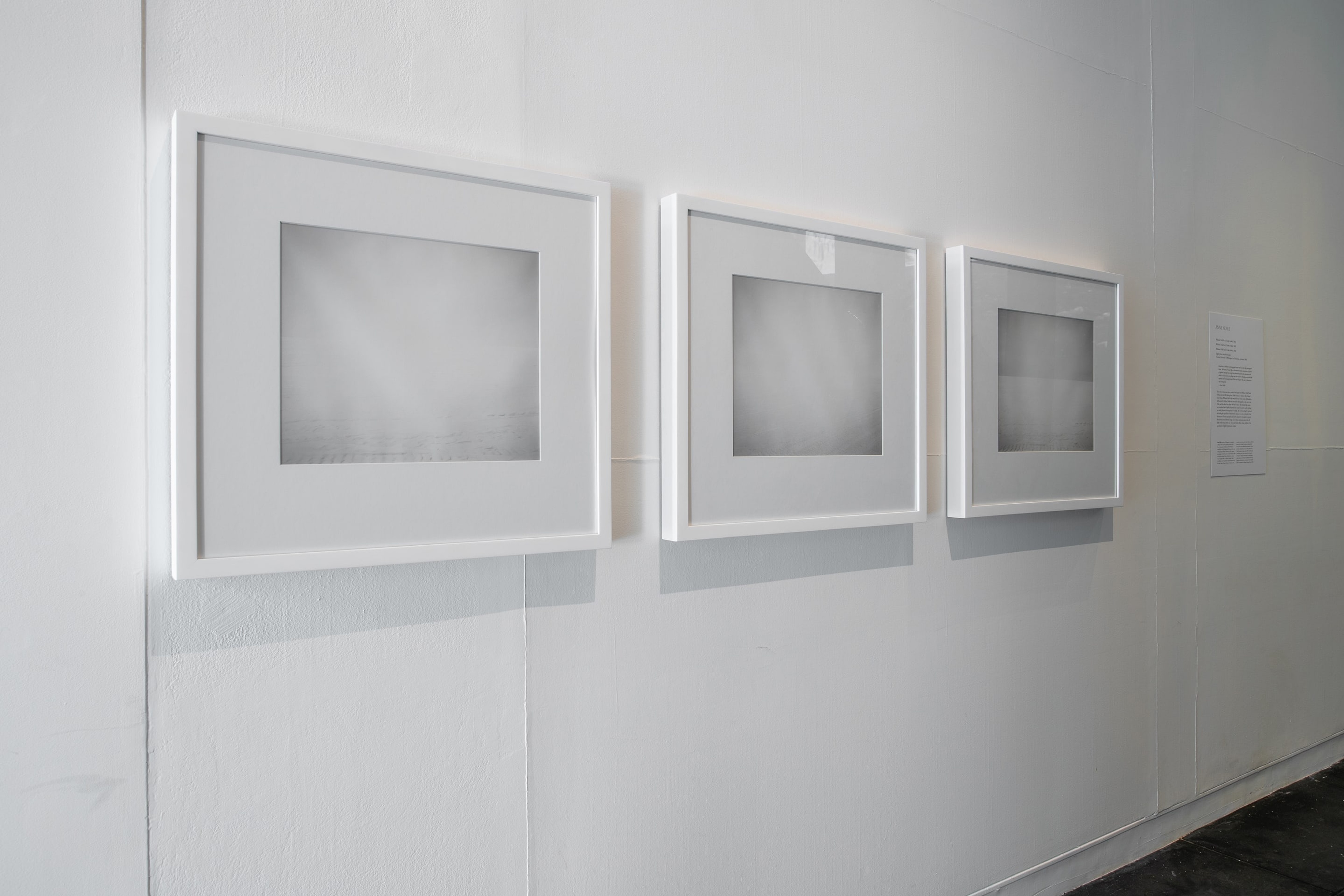
Anne Noble, William’s Field No. 2 (Under Erebus); William’s Field No. 4 (Under Erebus); William’s Field No. 6 (Under Erebus), 2002. Installation view, Listening Stones Jumping Rocks, Te Pātaka Toi Adam Art Gallery, Te Herenga Waka Victoria University of Wellington, 2021. Photo: Ted Whitaker